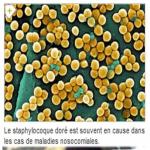What is cholesterol?
Definition
Cholesterol is a fatty substance (a sterol) found in the body and in certain foods. It is abundant in all fatty substances of animal origin, in the liver, in offal, in the viscera, in the bile secretions, in hormones, in milk, in eggs and in all cells. It is also found in a free state. The liver and the intestines produce 2/3 and food provides the remaining 1/3 in normal times. It is the most abundant lipid substance in the animal world and the most important from a metabolic point of view. It plays a central role in many biochemical processes. Cholesterol gets its name from the ancient Greek chole- (bile) and stereos (solid), as it was discovered in solid form in gallstones in 1758 by François Poulletier de La Salle. But it was not until 1814 that the French chemist Eugène Chevreul gave it the name cholesterol, which later became cholesterol.
The word "cholesterol" refers to a single molecule. Cholesterol is naturally good and helpful, but slowly and surely becomes dangerous when it is in excess in the blood over a long period of time. What is to be feared is its mode of transport and its combination with saturated fatty acids (animal fats, fatty meats, liver, brains, organ meats, whole milk, coconut, etc.) which gives a heavy compound that can deposit in The arteries. The terms "good" and "bad" cholesterol therefore do not designate two different molecules, but refer to HDL and LDL, the carriers of cholesterol in the blood.
Cholesterol has two origins:
-an exogenous origin: food that provides 1/3
- an endogenous origin: biosynthesis. The liver is one of the main sites of synthesis (provides 2/3).
Location and presentation
Cholesterol is present in all cells of living matter (sterol in the plant kingdom and cholesterol in vertebrates). In animals, including humans, it is abundant in liver, brain, spinal cord, organ meats, animal and human fats, egg yolk, etc. Its high rate can lead to gallstones or be a risk factor for atherosclerosis.
It can come in two forms:
--free form, ie not associated with another substance. Cholesterol sits on the surface of the lipoprotein
--esterified form, ie bound to a fatty acid to form sterides. The weakly hydrophilic character which could exist in the other form is then totally suppressed.
Add a comment








